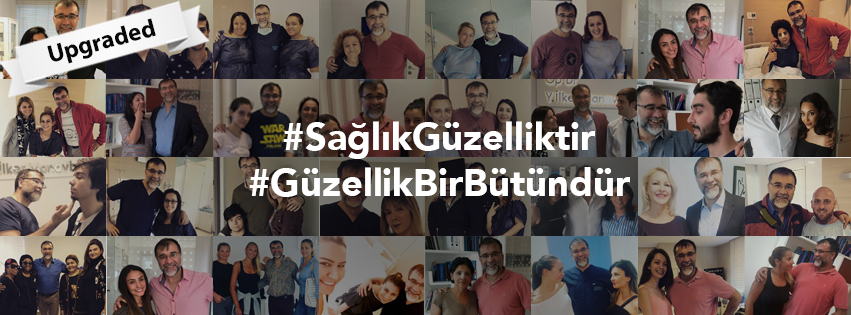breast-surgery
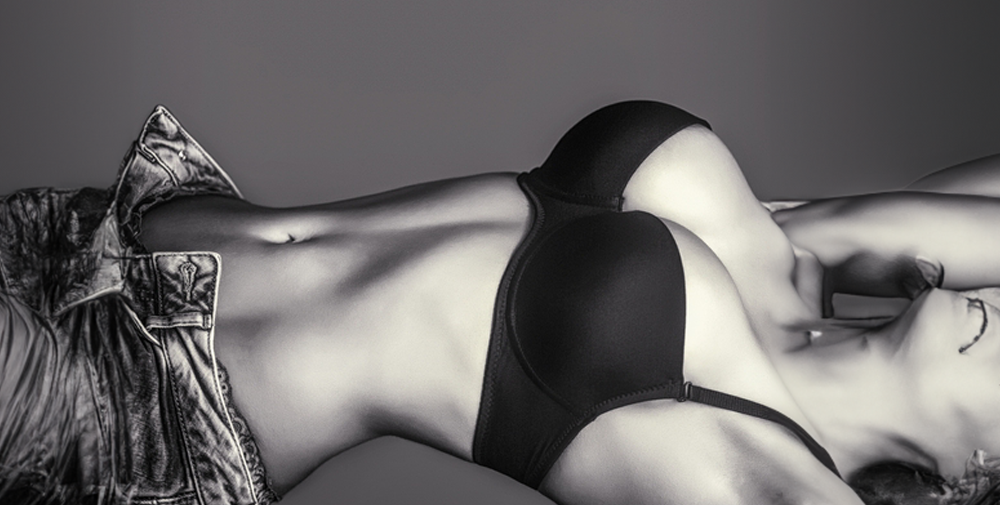
Breast Augmentation Aesthetics (With Silicone Prosthesis)
Prosthetic breast augmentation is one of the most frequently performed operations in plastic surgery. We can collect patients in need of breast augmentation by using a prosthesis in two main groups:
- Patients have congenitally insufficient breast development or asymmetric breast structure.
- Patients with asymmetry in breast tissue after pregnancy/breastfeeding or severe weight loss.
Patient Selection in Breast Augmentation
The patients in the first group mentioned above are usually young and have no children. Breast sizes of patients in this group are proportionally small with body structures. This situation, which is noticed more when wearing clothes or bikini, swimsuit forces the patients to wear a supportive bra. Again, it is a frequent occurrence for this group of patients to have asymmetrical breast size and shape. In some patients, there may be mild deformity in the breast wall in addition to the breast size problem. In this sense, the most common condition is the increase of protruding forward of the chest, and therefore the nipples are placed more outward on both sides. In every way, these problems can be solved by prosthetic surgery. The patients in the second group are older and have children frequently. It indicates that breast size increases significantly during most pregnancies and breastfeeding periods. Patients with insufficient breast size before pregnancy are usually happy with their breast size and shape during pregnancy. However, after the end of pregnancy/breastfeeding period, not only shrinkage but also slackness and sagging were added to their breast problems. Patients in this group are often in need of not only prosthetic enlargement but also simultaneous breast lift operation.
How many types of silicones are used in breast augmentation?
Two points are particularly important during preoperative evaluation. Each patient should be evaluated with their anatomical and physiological features. Factors varying from person to person determine the planning of aesthetic breast surgery and the direction in which patient expectation should be. There are two types of silicone prostheses in use. Both are under the guarantee of Mentor, the most trusted brand in the world. These are round and drop model silicones.
Topics discussed in preoperative evaluation:
– What type of prosthesis will be used?
Drops or round?
– Where will be the Prosthesis area ?
Subpectoral or under the mammary gland?
– Where will the prosthesis be placed?
Is the incision will be performed upper the nipple, under the nipple, or under the armpits?
– Will it be required the breast lift together?
– In addition to these, preoperative interview with the patients asked;
– Whether they use any medication,
– Whether they have allergies,
– Whether breast biopsy was performed for any reason before,
– Whether breast cancer in the family and whether the previous mammography results are evaluated.
In addition to the above points, the patient’s skin structure, chest width, length of neck, size and location of nipples, and perhaps most importantly, pre-operative breast tissue thickness and diffusiveness, make each operation special for the patient.
The most accurate operation planning is made for each patient as a result of the collective evaluation of all these points.
Breast Cancer and Disease Risk in Breast Augmentation Aesthetics
To date, there are no scientific data indicating that breast prosthesis used for breast augmentation increases the risk of any disease including breast cancer. At this point, the only issue related to the use of breast prostheses is the difficulty of mammography evaluation of breasts with a prosthesis. As a solution to this, in recent years, the placement of prostheses subpectoral, in other words, the reduction of the physical contact of the breast tissue with the prosthesis has reduced this difficulty in mammography evaluation.
Does Breast Augmentation Prevent Pregnancy and Breastfeeding?
Breast prostheses, whether placed subpectorally or on the muscle do not have a positive or negative effect on the pregnancy or on breastfeeding. However, pregnancy will inevitably lead to a change in the size and shape of the breast. Since the ratio of fat/gland (ie breast mammary gland / fat ratio) of breast tissue is genetically determined for each patient, it is not an issue that can be predicted the reflecting of the breast size and shape, including the gestation period. Therefore, patients planning to have children should be aware of this situation when making their decisions. 6 months after stopping breastfeeding the breast tissue is completely free from the effects of pregnancy and breastfeeding. The planning of the breast implants operation can begin accordingly.
Weight loss and breast tissue
Losses in the breast tissue occur in people who do diets that cause a great weight loss. While the volume of the breast becomes smaller, sagging may occur. Again, as in the case of pregnancy, since the ratio of fat/gland (ie breast mammary gland / fat ratio) of breast tissue is genetically determined for each patient, a reflection of breast attenuation in breast size and shape is not an issue that can be predicted. In this case, aesthetic breast prosthesis surgery is not planned for the person who continues to lose weight actively. When the patient reduce weight to the desired level and her weight remains constant, then the aesthetic breast surgery is planned by considering the above factors. If the placement of the silicone prosthesis is necessary, it is performed with the uplift operation.
How long does the breast augmentation take?
Breast augmentation aesthetics with breast prosthesis is approximately a 2 hour operation. Patients remain in the hospital on the day of surgery and are discharged from the hospital on the day after surgery by taking off the drains if they have been placed. For 4-5 days after surgery, our patient should limit arm movements and not carry heavy loads. During this period, patients are prescribed antibiotics and analgesics. Our patients come to medical control on the 5th day of the surgery and start to use a support bra for 1 month. It is recommended not to do sporting activities for about 1 month. The final shape of the breast would form about the end of this period.
The incision in the breast augmentation aesthetics
The incision points used to place the prosthesis in breast augmentation; * Nipple tip area: Periareolar * Breast bottom line: Inframammarian sulcus * Armpit area: Axillary
Breast tip incision in breast augmentation
It is a semicircular incision made on the outer borders of the brown area around the nipple. Since this incision is made at the border of the normal skin area with the brown zone, the scarring has the advantage of being minimally visible. Surgeon Doctor İlker Manavbaşı uses this incision especially in patients in the second group. The reason for this is that uplift surgery is also frequently needed for these patients and when the nipple is lifting up the same area is used to place the prosthesis. Again in the second group of patients, the brown area of the nipple is most likely irregular, increased in diameter and frequently asymmetrical after pregnancy. Turning this area into a more regular circle and reducing the areola (brown nipples) requires making an incision in this area in any case.
Breast bottom lineIt is an incision zone that is often used in patients in the first group. This area is also preferred in patients in the second group, where the nipple does not need to be lifted, and the nipple area called areola does not change after previous pregnancies or weight gain. This area has two advantages. The first is the minimal contact with the breast tissue when reaching the site where the prosthesis will be placed and this incision is almost no harm to breast anatomy and physiology. Secondly, the incision area is located in an already existing anatomical fold. It is assumed that scarring will not be exposed to any tension after placement of the prosthesis as a nipple incision. In the first group of patients, the nipple brown area is often very small, consistent with the deficiency in breast development. A semicircular nipple incision in this group makes the placement of the prosthesis very difficult. In such cases, an inframammary incision is already mandatory preference.
Armpit IncisionThis area, which looks attractive due to its distance to the breast and its concealed placement under the armpit, requires the use of special endoscopic instruments. It is not a preferred method for two reasons. First, the prostheses to be placed with this method should be filled with serum, ie saline-filled after placement under the breast. The second reason is that the risk of bleeding is higher than the other methods during or after surgery even in the most experienced hands. Since the pocket where the prosthesis is to be placed is opened from a very small and remote area, it is very difficult to open a pocket in the right size and place.
Breast augmentationsurgery is the procedure of a preparation of a convenient pocket for the prosthesis. Preparing a pocket of the right size and placement is more important than where the incision is. In the long term, the scar on each incision site is considered acceptable, beside for exceptions.
The most important change that has been performed since the first applications ofProsthetic Breast augmentation aestheticsis related to which prostheses are used rather than surgery. Surgical principles, ie where and how to open the prosthesis pocket have not changed much. However, the developments regarding the production of prostheses, which may cause a forming less reactive to the body or more natural breast appearance and sensation still continue. The process of inspection and testing of prostheses produced by prosthetic manufacturers before they are released is most seriously applied in the United States. For this reason, today we use the Mentor brand which is one of the best products that have received FDA approval in the USA. Particularly in the first group of patients, our choice is the drop shaped prosthesis filled with a silicone gel which provides the most natural breast appearance. After the use of prostheses in the operation, we provide our patients the basic information of these prostheses and give the stickers that carry the production number.
Location of prosthesis placementExcept in special cases, we prefer the subpectoral placement of prostheses in both groups. In this method, also known as subpectoral, the upper part of the prosthesis is under the pectoral muscle in the anterior chest wall and the lower part is below the breast tissue. In this method, also known as subpectoral, the ¾ upper part of the prosthesis is under the pectoral muscle located in the anterior chest wall and the lower ¼ part is below the breast tissue. The most important reason for this preference is to prevent the prosthesis from being noticed externally because it is surrounded by muscle layer. Particularly in the first group of patients, the operation is not only breast augmentation but also to create the breast shape, that is why the drop shaped prosthesis under the muscle placement of the breast gives the most natural appearance. Since the patients in the first group have very few breast tissues before surgery, the task of hiding the prosthesis is given to the muscle tissue. In patients in the second group, breast tissue mostly sags, so observable upper part of the prosthesis placed on the muscle is quite a common problem. In these patients, the prosthesis is placed under the muscle and sufficient cover is provided by the muscle tissue. Healthy and beautiful days.
Breast reduction surgery not only improves the shape and size of the breast but also provides a permanent solution to the problems that patients often complain about, such as neck and back pain caused by oversized breasts. The excess size of the breasts may occur in the postadolescent period and may reach a serious dimension in the period after pregnancy. Another group of patients does not know the solution to the problem and after a long period of neck and back pain, a physical therapist sends a patient to a plastic surgeon.
Proper Patient Selection
As it is understood from the above statement, patients applying for breast reduction surgeries should be evaluated in three groups. 1-The young patient group who is more socially and psychologically uncomfortable because of their large breasts during adolescence. These patients suffer from unhappiness about their body images while on the other hand, they find it difficult to find and wear appropriate clothes, and they fear being mocked by friends and co-workers. 2- Middle-aged patients who have tolerated the problem of breast size in the pre-pregnancy period to some extent, but who suffer from social-psychological problems as well as head-neck pain after excessive growth with pregnancy and breast-feeding. 3- Group of patients with advanced age that has left the social-psychological problems of breast size behind them, and even after early pregnancy has been accustomed to being folded to the head and neck pain after a while, but she could no longer ignore these problems with the onset of osteoclasis and she came to the plastic surgeon with the guidance of a physical therapist. The body shapes of these patients have a slightly humped shape with the shoulders forward to compensate for the body weight centers that the breast size changes.
Operation
Breast reduction surgery is an operation that lasts 3-4 hours, depending on the technique. It is applied under general anesthesia. Breast reduction operations can be performed with different techniques. In the most commonly applied method, the incision around the breast nipple travels in a vertical direction downward and extends horizontally in two directions in the undercut fold. After the lifting the nipple sufficiently and the excess breast tissue is removed, the skin areas on both sides are joined together under the breast and sutured to the new place. There is a very popular method in recent years where only vertical incisions are used, the Vertical Breast Reduction, the incision ends under the breast zone and no horizontal incision is made in both directions. In this method, the expand and opening and accumulating along the vertical incision line is expected in 4-6 weeks after the surgery. Therefore, the patient needs a longer waiting time and patience.
After Breast Reduction Surgery
The postoperative period of breast reduction surgery is similar to breast lift operations. After a period of about 2-3 days, patients can take a shower and wear normal clothing. The patient should stay away from activities that will force herself for 1-2 weeks after the operation. About a month later, she can return to sporting activities.
The loss of elasticity of the breast skin and the sagging of the breast tissue over the chest wall is a reflection of the aging process seen in each woman with age. These changes in both the skin and breast tissue are related to many factors including genetics. The most affecting events are pregnancy/breastfeeding and serious weight loss.
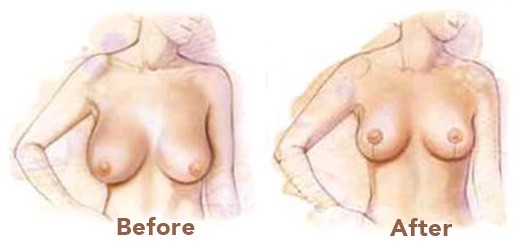
One or more of the following problems are present in patients undergoing breast lifting surgery. – Breast tissue is sufficient but flabby. It’s like the breast slipped over the chest wall. – Breast tissue is insufficient and flabbyat at the same time. Patients in this group were generally happy with their breast size during pregnancy/breastfeeding period. – The sagging of the breast tissue is mostly in the nipple area and there is a sagging of the nipple area with the nipple facing down. In the preoperative evaluation, changes in the breast tissue and nipple of the patient are evaluated, measurements are made and the planned postoperative view is discussed with the patient. If there is a history of pregnancy/breastfeeding and weight gain, changes in the breasts during these periods, existince of any diseases or masses in the breasts, the results of biopsy -if it is performed, the existence of breast cancer in the family are questioned.
Breast lifting surgery technique
Breast lifting operation is performed with or without the use of a prosthesis. Operations without prosthesis take about 2 hours. In cases where the prosthesis is used, this time is approximately one hour longer.
Breast lift surgeries include different techniques, but the most commonly used are the removal of the surplus skin to determine the degree of sagging, lifting the breast tissue and the nipple by moving it to a higher point.
The mildest cases the location of the incision is made starting from around the nipple area (areola) and can be a vertical incision leading to the under breast line at an increased degree of sagging and in more severe cases it can be a keyhole shape with lines extending to both sides.
The same incision areas are also used for the placement of the prosthesis in the required cases. It is much more comfortable after surgery in cases where the prosthesis is not used.
The postoperative painful period is limited to the day of operation. Pain and sensitivity recede rapidly from the next day, and after 2-3 days the patient can use his new bra and begin to take a shower.
In the cases of the prosthesis, the postoperative period is similar to the cases of the prosthesis. In cases where the prosthesis is placed under the muscles, pain may increase with arm movements due to the tension in the muscles for 4-6 days postoperatively.
Another issue that should be noted is that patients with light and thin skin are more prone to breast sagging than patients with thick and dark skin due to the skin structure. In the long-term evaluations, it was seen that these patients lost the support provided earlier in the surgery.
This makes it necessary, especially in this group of patients, to use a supporting bra in the long term even after such an operation.
Breast lift surgery is in a sense to gain a more youthful appearance a deformed area that is aging faster than the rest of the body. No aesthetic operation can stop aging.
The continuation of the effect provided by surgery is partly related to genetic and partially to external factors. In this sense, it should be emphasized that patients with weak skin – subcutaneous support tissue should wear a supportive bra in the long term after surgery.
Breast lift surgery (mastopexy)
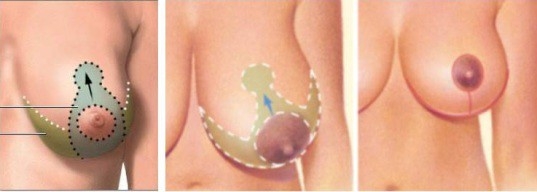
-As for breast sagging repair operations, they are according to the case. If it needs to be tightened and lifted, there are different surgical methods and techniques to perform a breast lift operation.
-Some of them are done by making a wound in the shape of an inverted English T from the nipple to the cavity under the breast.
-In some cases, this operation can be performed through a smaller wound under the breast so that the shape of the breast looks as if it has not undergone an operation.
-But if the size of the breast is also small, it is possible to enlarge the breast at the same time with the lift by implanting a filler.

A Few Important Notes
It should be noted that after the breast lift operation, the shape of the breast may be altered in part by the use of a prosthesis or without use prosthesis – with future pregnancy/breastfeeding and weight fluctuations. Both pregnancy/breastfeeding period and weight changes are determined by genetic and hormonal factors in each body.
In other words, how long the breasts will grow during a pregnancy/breastfeeding period, or changes in the breasts during weight changes periods cannot be determined. Patients who have had a pregnancy or have experienced weight changes could make the most accurate guess according to their experience. Changes in the breasts of patients who become pregnant or gain weight again after breast lifting surgery are independent of this operation. Therefore, it is recommended that patients who have had a significant growth in their breasts before this period should be given this surgery no longer when a new pregnancy is planned.
Learn more about Dr. ilker Manavbasi

He is one of the most famous and illustrious names in the field of plastic surgery in Türkiye
The doctor has a qualified center to perform plastic surgery and a trained medical staff equipped with medical methods and techniques
Which helps the patient get the best comfort and safety
Certificates and recognitions from the most important international societies for plastic surgery

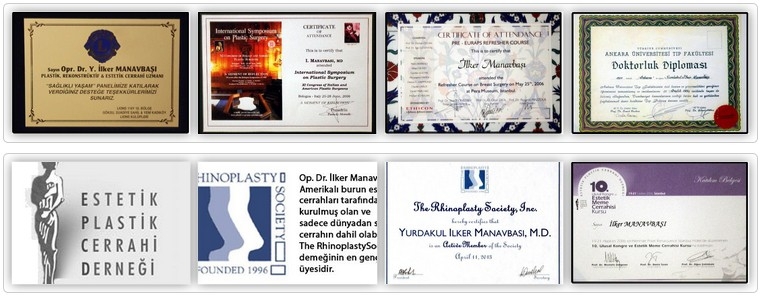
For more details feel free to contact us
00905385844484








